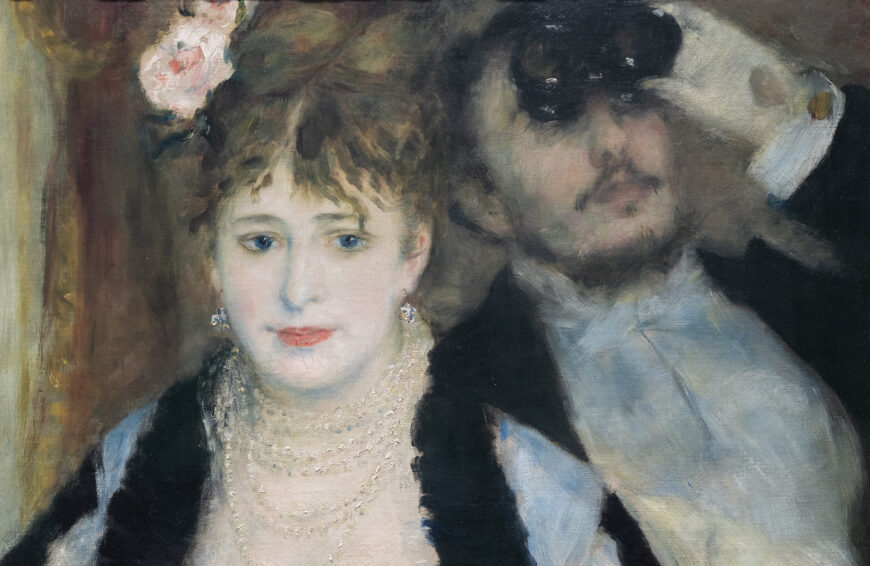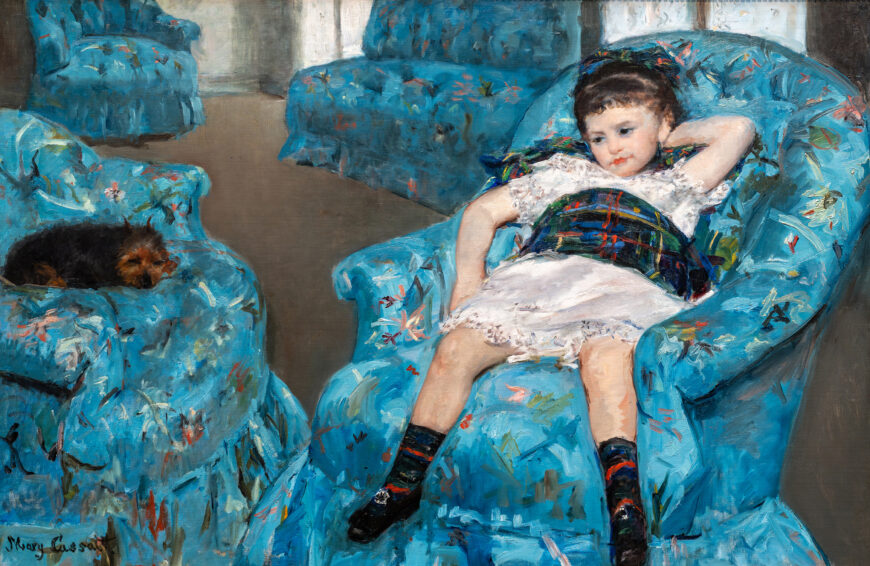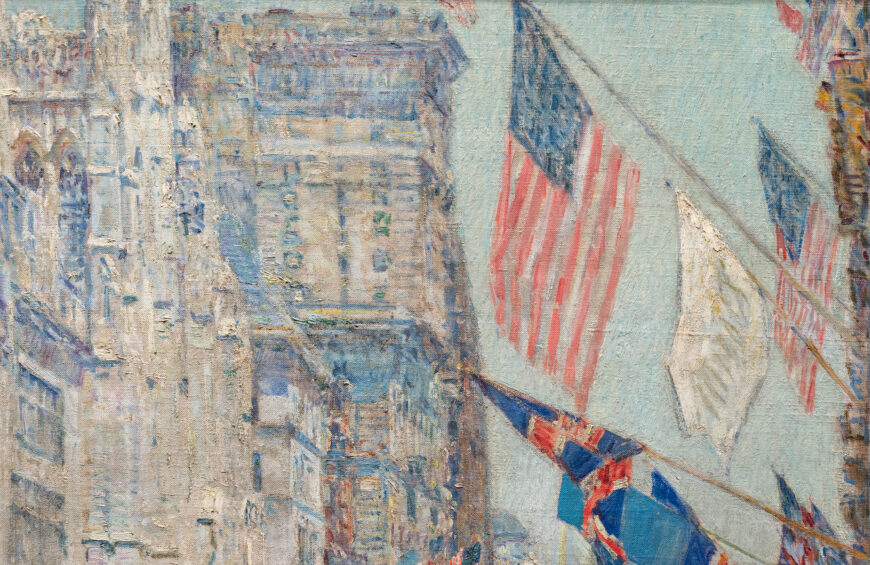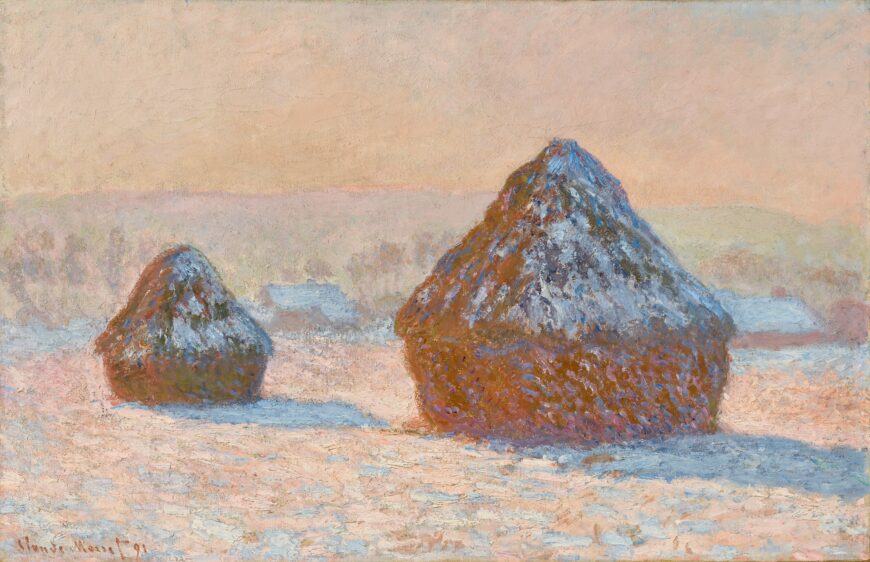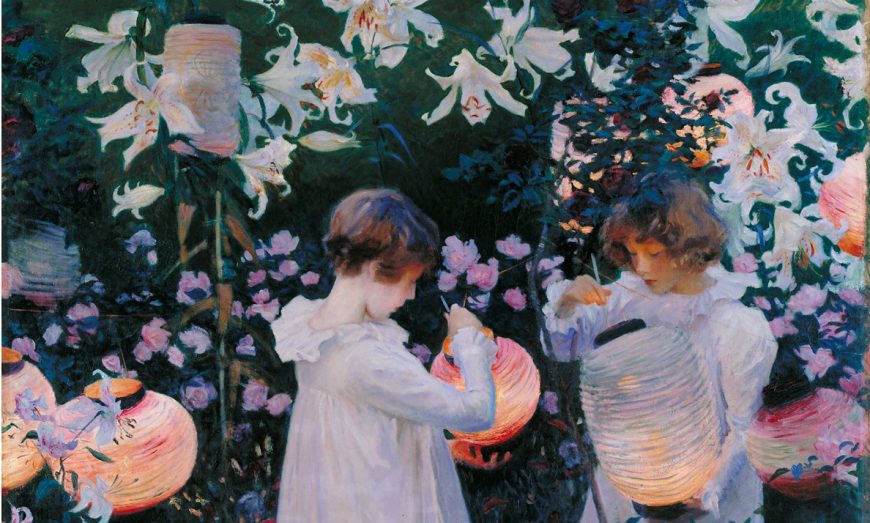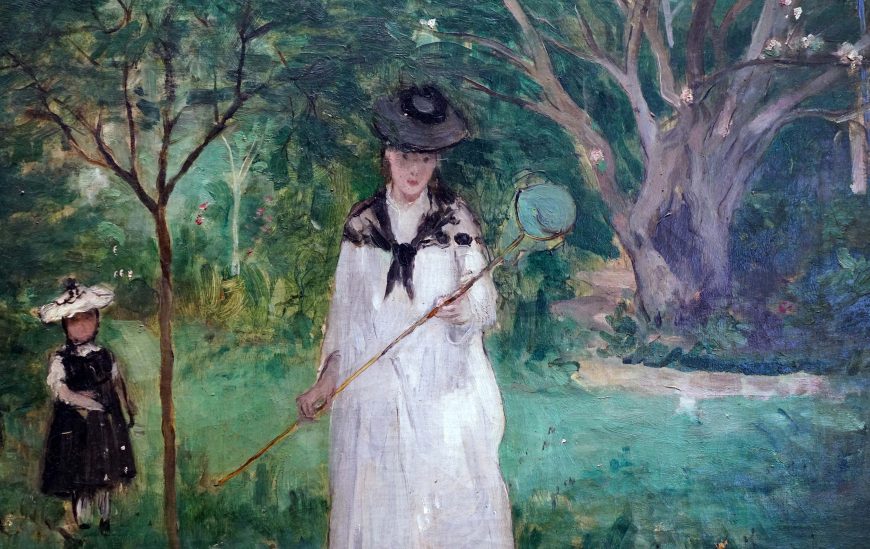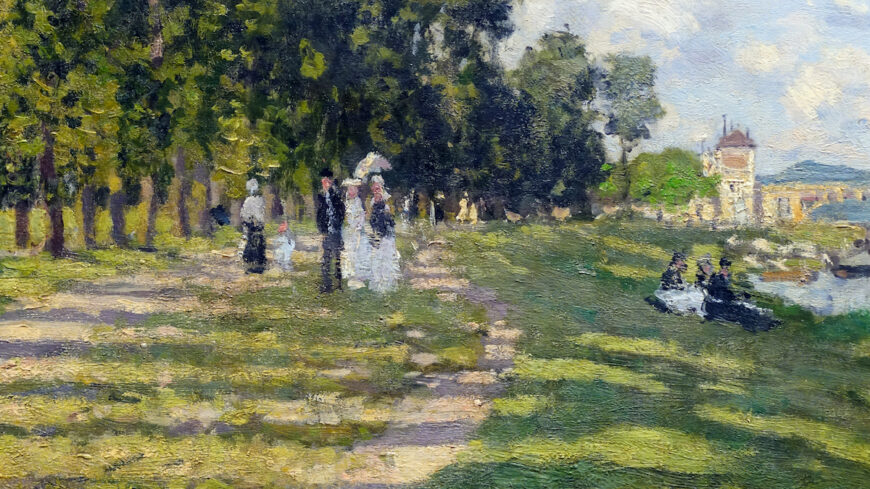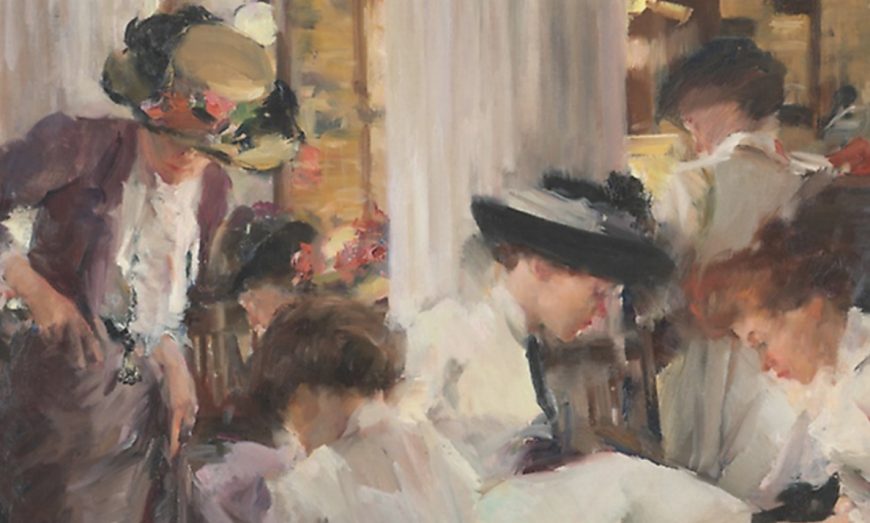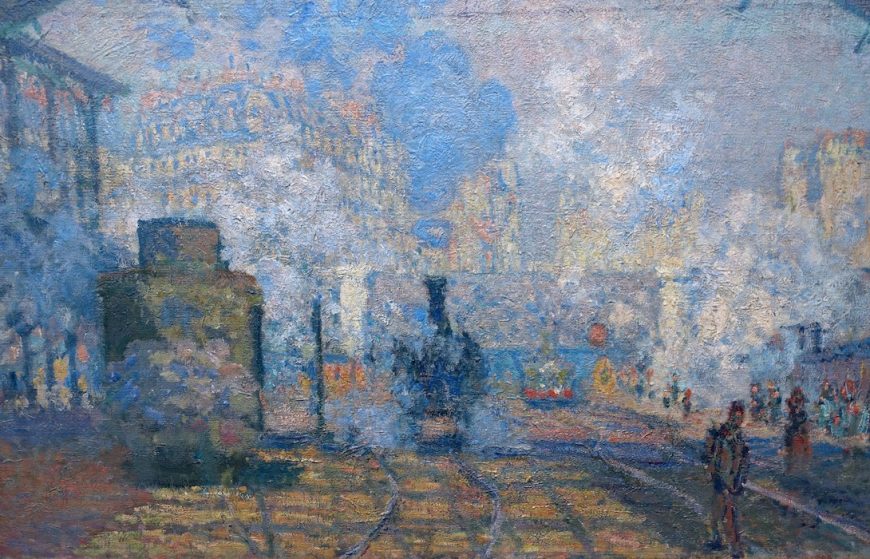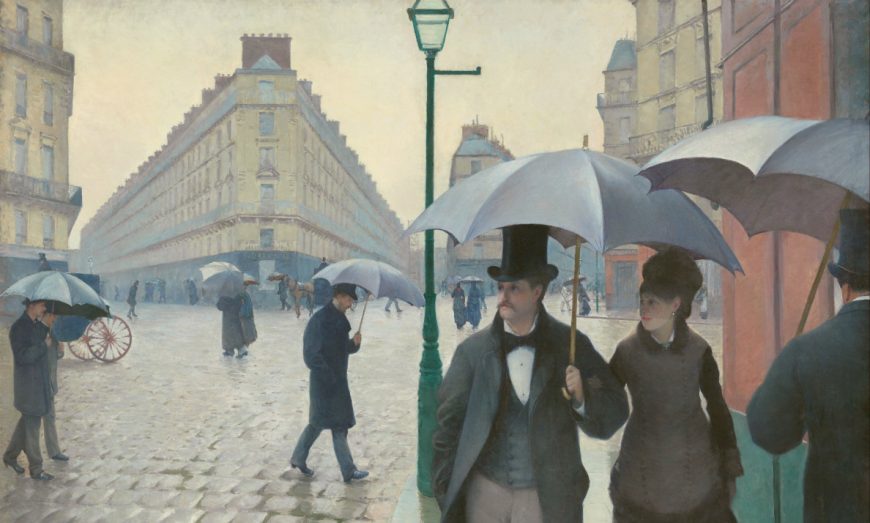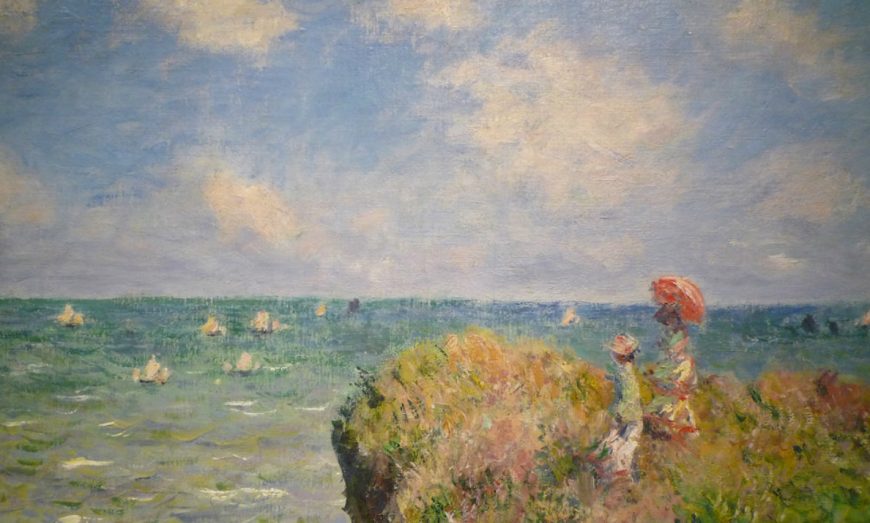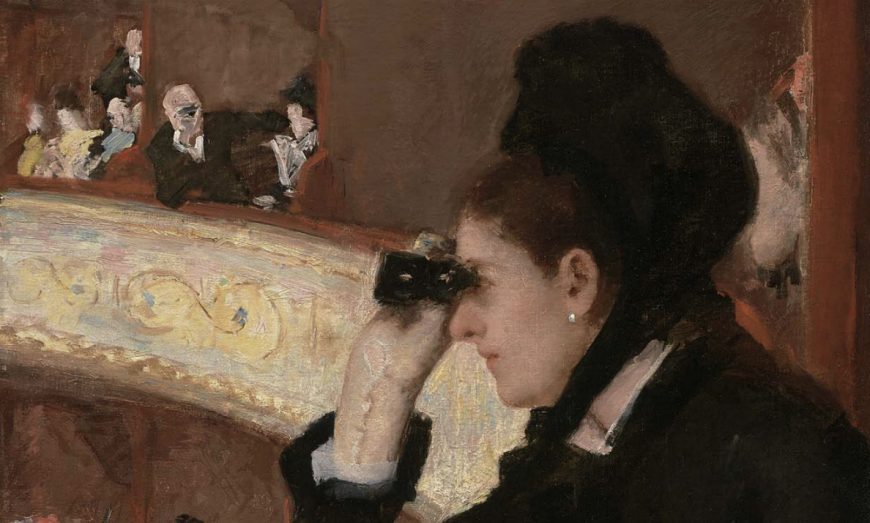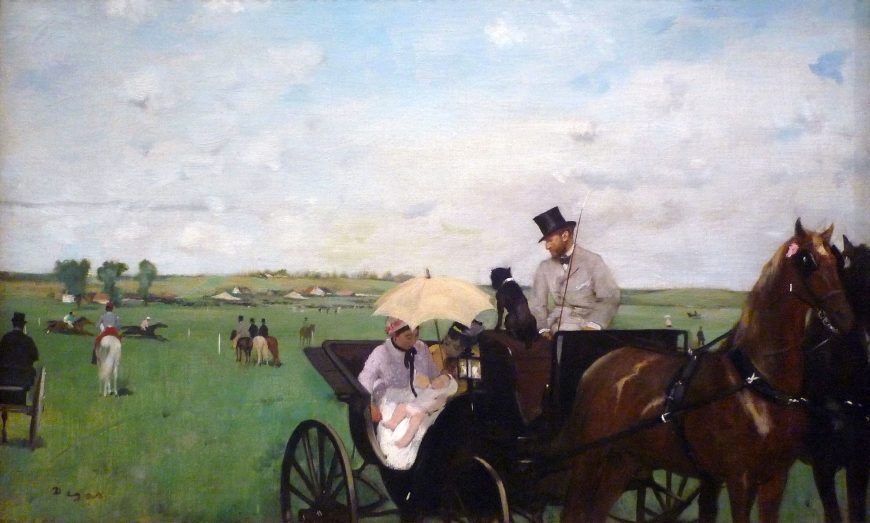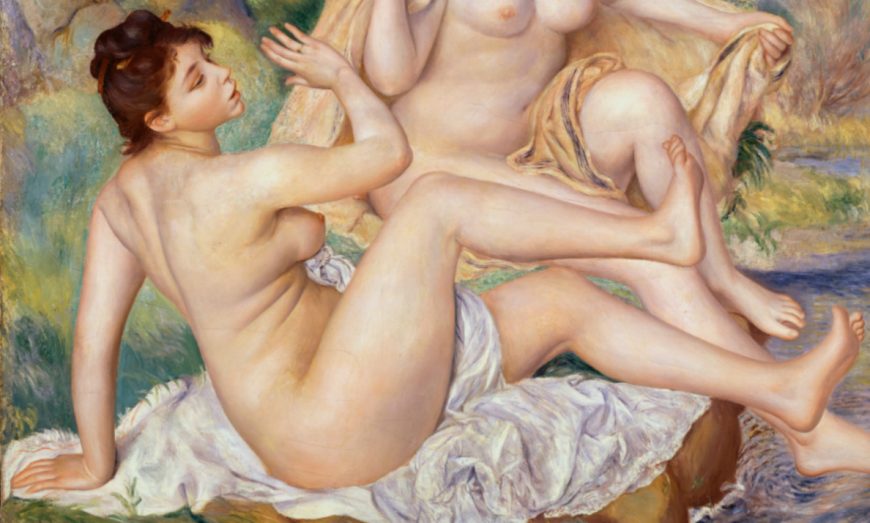Berthe Morisot, The Cradle, 1872, oil on canvas, 56 x 46 cm (Musée d’Orsay, Paris)
Berthe Morisot, The Cradle
[0:00] [music]
Dr. Steven Zucker: [0:05] We’re at the Musée d’Orsay, and we’re looking at a painting by Berthe Morisot, “The Cradle.”
Dr. Beth Harris: [0:10] This is a lovely painting of a baby in a cradle being watched over by her new mother.
Dr. Zucker: [0:16] Her later work is some of the most radical painting in its extraordinary brushwork, but this is an early canvas.
Dr. Harris: [0:23] This was exhibited at the Impressionist exhibition of 1874. This was an exhibition of the artists who we now call the Impressionists, where they exhibited independently from the official art exhibitions in Paris, but sadly, this painting was little noticed by the press and the public, and remained unsold for several years, and in the family until 1930.
Dr. Zucker: [0:43] It was extremely difficult to be a female painter at this time, and so it’s not surprising that her work received little critical attention. There were some female painters that were successful; I’m thinking about Rosa Bonheur, for example. But for the most part, especially women of Morisot’s class, a woman of her level of affluence would have a quite restricted environment in which they could freely move.
[1:05] Women were expected to largely exist in the domestic sphere.
Dr. Harris: [1:09] That’s what we see in the work of so many women artists at the end of the 19th century, a lack of access to the more typical subjects of modern life of cafés and bars. This was the space that they had access to and that’s what they painted. Morisot would go on to paint many beautiful scenes of family life, but this one is especially poignant.
Dr. Zucker: [1:29] What we’re seeing is Morisot’s sister looking over her daughter, and there’s a wonderful intimacy. The child is angelic, draped under that gauzy net. Morisot’s sister looks down at her with a gentle concern that is really moving and beautiful.
Dr. Harris: [1:43] It recalls for me images of Mary holding the Christ Child, but in those cases, Mary holds the Christ Child on her lap. Here, we have a very modern, domestic setting with a cradle and a lovely interior in the background with a curtain.
[1:58] We have a sense of a modern woman in modern dress. Her lowered eyelids, the chin that rests on the hand, the other arm that comes forward foreshortened across the cradle, suggests a contemplation about the serious responsibilities of motherhood but also the incredible affection of motherhood.
Dr. Zucker: [2:17] The fact that this is seen worthy as a subject for a painting is also a reflection of the growth of the idea of the middle-class family in the 19th century. That the domestic space was a protected space, an insular space.
Dr. Harris: [2:30] I think we see that here. Not only is the child enveloped in that gauzy material, but Morisot’s sister herself is enclosed. On one side of her, she has the diagonal of that gauze. Above, another diagonal formed by the curtain, and to the left, the edge of the painting. She is also rather locked into this domestic space.
Dr. Zucker: [2:52] I want to spend just a moment looking at the brushwork. Although there are some fine linear passages that are almost drawn — for instance, the fine locks of hair that fall down the woman’s temple — much of the brushwork is quite loose, and anticipates Morisot’s later style.
[3:06] Look, for example, at the pink fringe at the edge of the netting, or the way in which the collar of the woman is rendered. There’s a beautiful looseness here that shows Morisot’s extraordinary facility with paint.
Dr. Harris: [3:18] Virtuosity is what comes to mind when I think of Morisot and the handling of paint. I notice it also in the white touches of paint that form the top of the curtain, or even in her sleeve. Those quick, circular movements of paint that suggest the texture of her dress.
Dr. Zucker: [3:35] Then there’s choices that Morisot makes in terms of where our attention is going to fall. Look at the way in which the woman’s fingers are painted so flatly. The upper parts of the fingers, which are foreshortened, are virtually not articulated at all. All that she’s chosen to give us is the flat planes of the fingers that are exposed directly to us.
Dr. Harris: [3:53] I love those fingers, their slight sense of fidgetiness. Unfortunately, I think we still have a tendency to discount images of mothers and children, to see them nostalgically and sentimentally.
Dr. Zucker: [4:05] If we look around the galleries at the d’Orsay, almost every painting is by a man. Morisot is an exception, and if we look at auction prices, if we look at the art market, female artists are still not given their due.
[4:15] [music]
| Title | The Cradle |
| Artist(s) | Berthe Morisot |
| Dates | 1872 |
| Places | Europe / Western Europe / France |
| Period, Culture, Style | Impressionism |
| Artwork Type | Painting |
| Material | Oil paint, Canvas |
| Technique |
Loading Flickr images...


